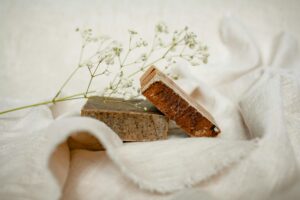Dry Skin : Causes, Treatments, and More”
Dry skin happens when your skin loses too much moisture, making it feel rough, flaky, or itchy. Common causes include cold weather, hot showers, harsh soaps, or not drinking enough water. Some health conditions or genetics can also play a role.
To treat dry skin, use a gentle moisturizer daily, avoid long hot showers, and drink plenty of water. If your skin stays very dry or irritated, a doctor can help. Taking small steps can keep your skin soft and healthy!
Causes of Dry Skin All Over the Body

Dry skin all over your body can be caused by many things. Here are some common reasons:
- Cold Weather – Cold air has less moisture, which dries out your skin.
- Hot Showers or Baths – Hot water can strip your skin of natural oils.
- Harsh Soaps or Products – Some soaps and cleansers can be too strong and remove your skin’s moisture.
- Low Humidity Indoors – Heaters in winter make indoor air dry, which affects your skin.
- Not Drinking Enough Water – Your skin can get dry if your body is dehydrated.
- Aging – As you get older, your skin naturally becomes drier.
- Skin Conditions – Eczema, psoriasis, or other conditions can cause dry, flaky skin.
- Too Much Sun – Sun exposure can damage and dry out the skin.
- Certain Medications – Some medicines have side effects that cause dry skin.
- Poor Nutrition – Lack of vitamins like A, C, or E may lead to dry skin.
Symptoms
q can be a once-in-a-while thing—like just in the winter—or it might stick around and need more regular care. It really depends on a few things: your age, your overall health, your skin tone, where you live, and how much sun you get. The symptoms can vary, but here’s what you might notice:
- That tight, stretched feeling—like your skin’s a size too small
- Rough patches you can feel or see
- Itching that just won’t quit (yep, it has a fancy name: pruritus)
- Flaky skin, sometimes making brown or Black skin look ashy
- Scaling or peeling, from mild to pretty noticeable
- Cracks in the skin that look like a dry riverbed, especially on the legs
- Fine lines or small cracks
- Redness on lighter skin, or a grayish tone on darker skin
- Deeper cracks that can hurt or even bleed
It’s frustrating, we know. But the good news? Most of these symptoms can be managed with the right care.
Risk Factors

Some people are just more likely to deal with dry skin than others. It’s not your fault—it can depend on a mix of things, like your body, your environment, and even your daily habits. Here are a few common risk factors:
- Age – As we get older, our skin naturally gets drier and thinner.
- Climate – If you live somewhere cold, windy, or super dry, your skin might dry out more often.
- Season – Winter’s a big one. Cold air outside and dry heat indoors make a rough combo.
- Long, hot showers – They feel great, but they can strip away your skin’s natural oils.
- Harsh soaps or cleansers – Some products are just too strong and leave your skin feeling tight and dry.
- Health conditions – Things like eczema, psoriasis, diabetes, or kidney disease can make dry skin worse.
- Swimming – Pools with chlorine can really dry out your skin.
- Sun exposure – Too much sun damages the skin, making it dry and flaky over time.
- Low water intake – Not drinking enough water? Your skin can suffer too.
Dry Skin Treatment
Treating dry skin doesn’t have to be complicated—it’s mostly about being gentle and keeping your skin hydrated. Here are some easy and effective ways to treat dry skin:
- Use a gentle moisturizer – Pick a thick, fragrance-free cream or ointment. Apply it right after bathing while your skin’s still damp.
- Avoid hot showers – Stick to warm water and keep showers short (around 5–10 minutes).
- Choose mild soaps – Go for soap-free or gentle cleansers that won’t strip away natural oils.
- Moisturize often – Especially after washing your hands or face, or when your skin feels tight.
- Use a humidifier – Adds moisture to dry indoor air, especially during winter.
- Wear gloves – When it’s cold or when using cleaning products, gloves help protect your skin.
- Drink plenty of water – Hydrating from the inside helps your skin too.
- Don’t scratch – Try not to itch, even if your skin feels dry—it can make things worse.
- Wear soft, breathable clothes – Cotton is a good choice; avoid rough fabrics like wool right on your skin.
- See a doctor if needed – If over-the-counter stuff doesn’t help, a dermatologist can recommend stronger creams or treatments.
How to Treat Dry Skin on the Face
Dry skin on your face can feel tight, flaky, and uncomfortable—but don’t worry, there are simple ways to calm and hydrate it. Here’s what can help:
- Use a gentle face cleanser – Pick a creamy or hydrating cleanser without alcohol or harsh chemicals. Skip the foamy, drying stuff.
- Wash with lukewarm water – Hot water can strip your skin’s natural oils. Stick to warm water instead.
- Pat, don’t rub – After washing, gently pat your face dry with a soft towel.
- Moisturize right away – While your skin is still a little damp, apply a gentle, fragrance-free face moisturizer. Look for ingredients like hyaluronic acid, glycerin, or ceramides.
- Skip harsh exfoliants – Don’t scrub your skin or use strong exfoliating products—they can make dryness worse.
- Use a humidifier – If the air in your room is dry, adding moisture can help your skin stay hydrated.
- Apply sunscreen daily – Even in winter! Choose one made for dry or sensitive skin.
- Avoid alcohol-based products – These can dry out your face even more. Check your toner, astringent, and makeup.
- Try a hydrating mask – Once or twice a week, use a gentle moisture-boosting face mask.
- Stay hydrated – Drinking plenty of water helps your skin from the inside out.

